Abstract
Escherichia coli K-12 colicinogenic for Col E2 yielded a mutant, SK95, that carries a nonsense mutation in the colicin structural gene. A derivative of SK95 that carries an as yet unidentified suppressor mutation produces a colicin E2 that is temperature sensitive (TS). This mutant colicin kills sensitive cells at low temperature but not at high temperature; the colicin adsorbs to cells at high temperature but does not kill them unless the temperature is lowered. Unlike normal colicin E2, which adsorbs rapidly to cells, TS colicin E2 adsorbs slowly over a period of several hours. The biochemical target of colicin E2 is deoxyribonucleic acid (DNA). When acid solubilization of DNA was compared in cells treated with either TS or normal colicin E2, striking differences were observed. Cell killing and acid solubilization of DNA by colicin E2 were shown to be separable events under certain conditions. The results are discussed in relation to the mechanism of action of colicin E2.
Full text
PDF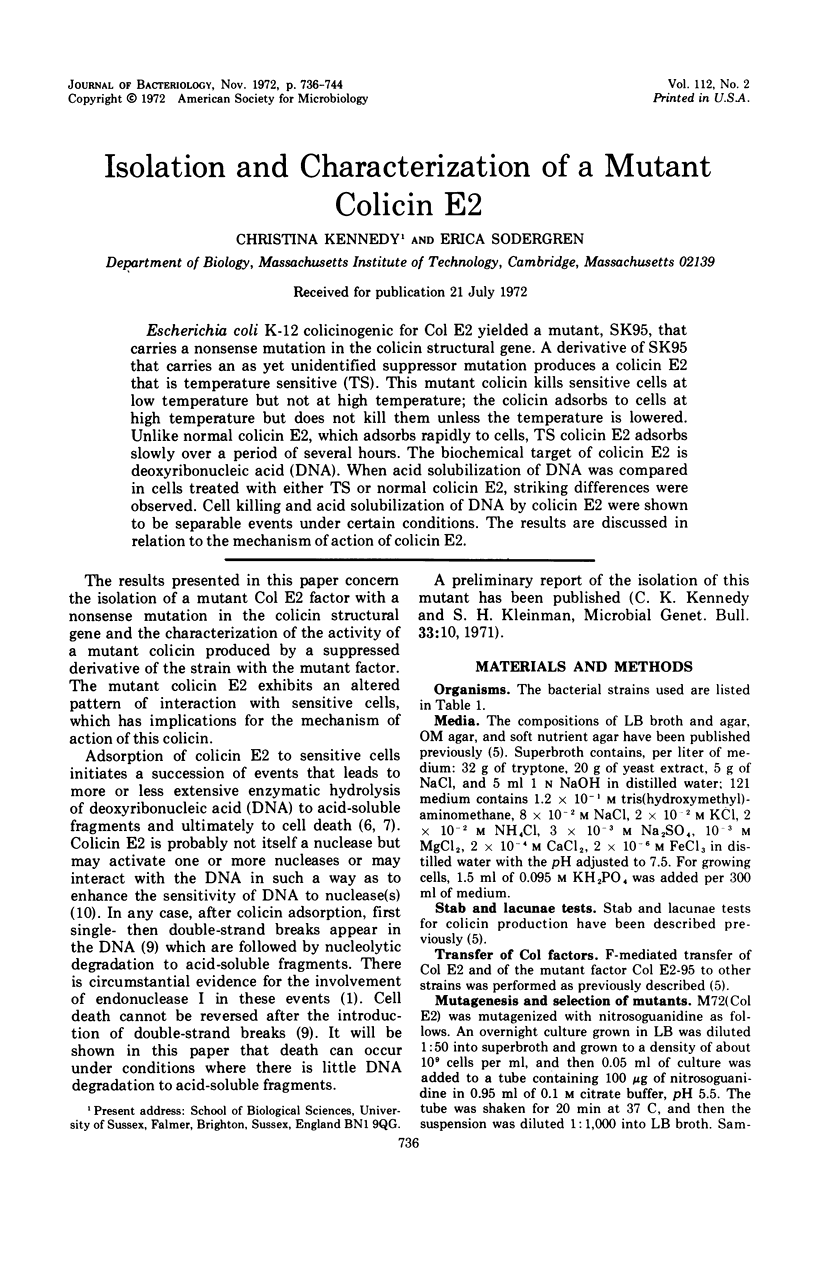
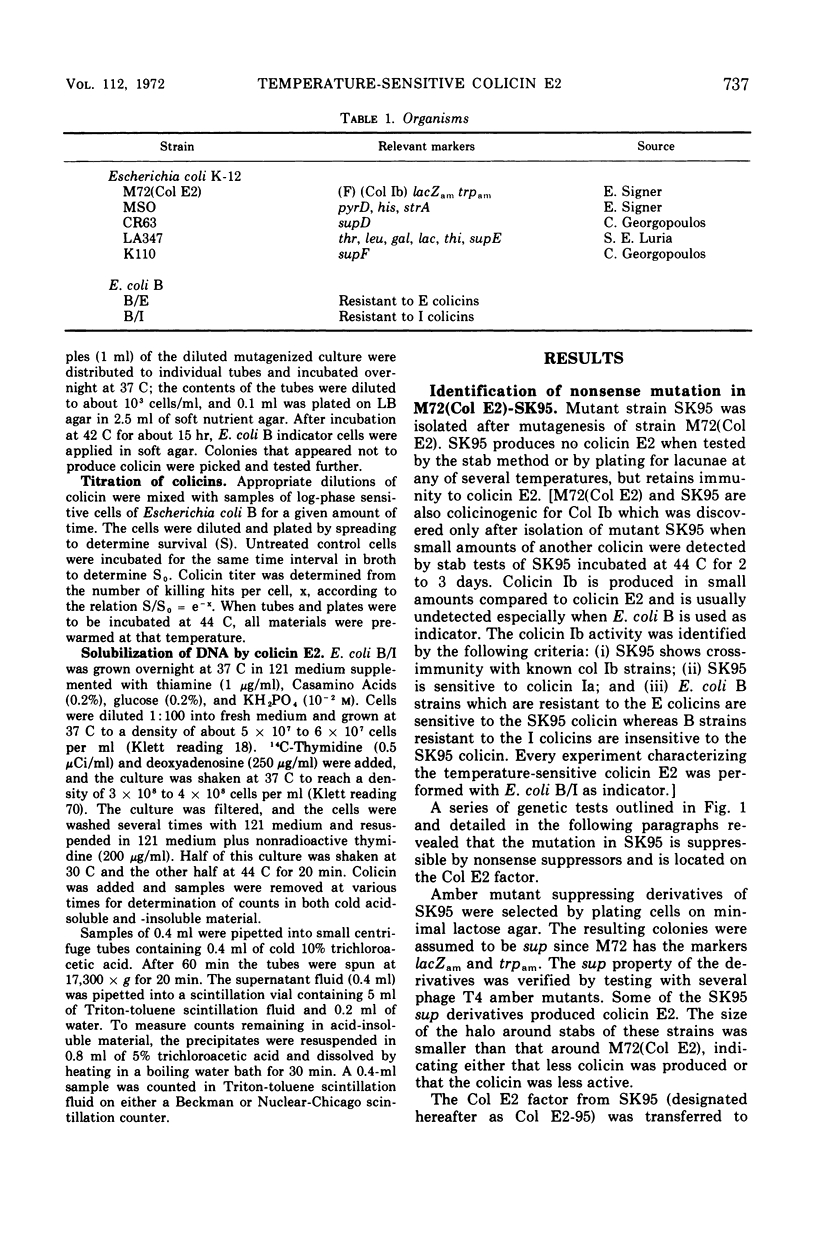
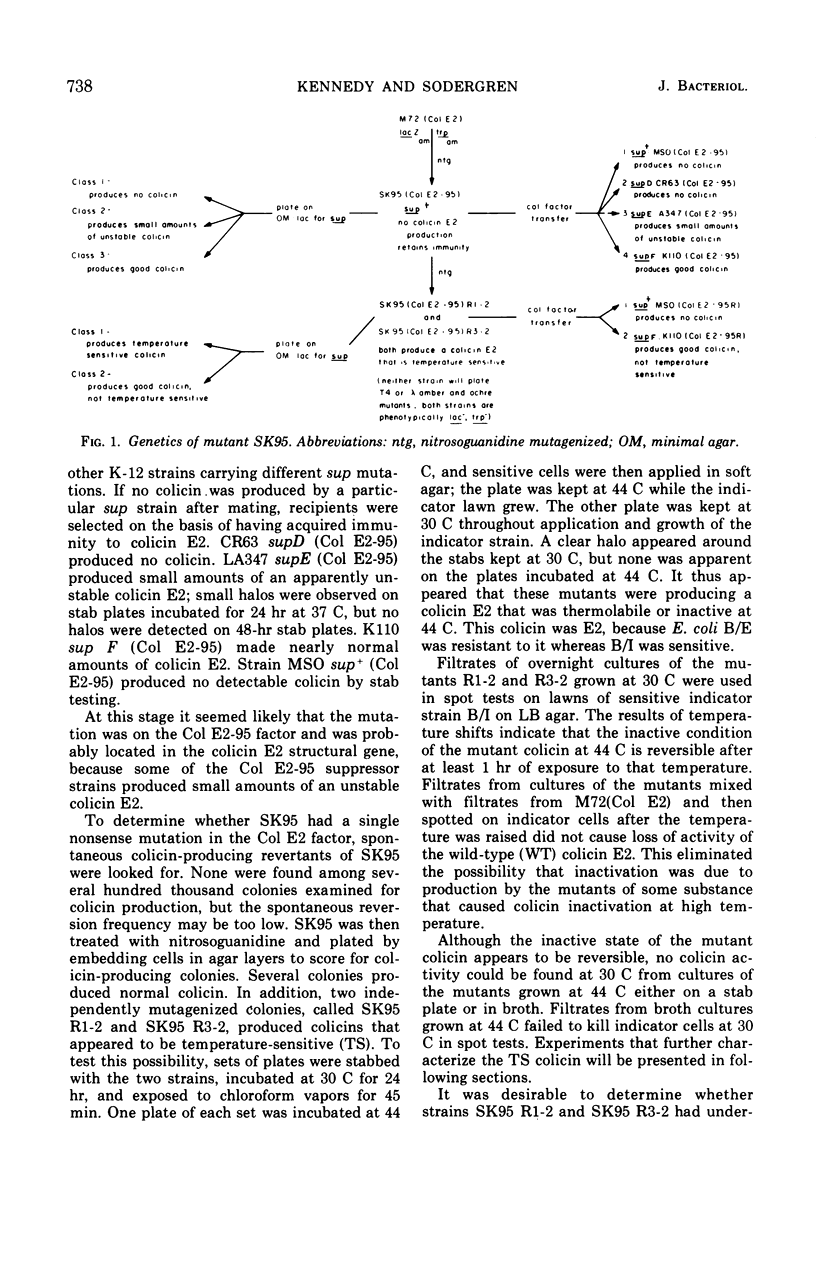
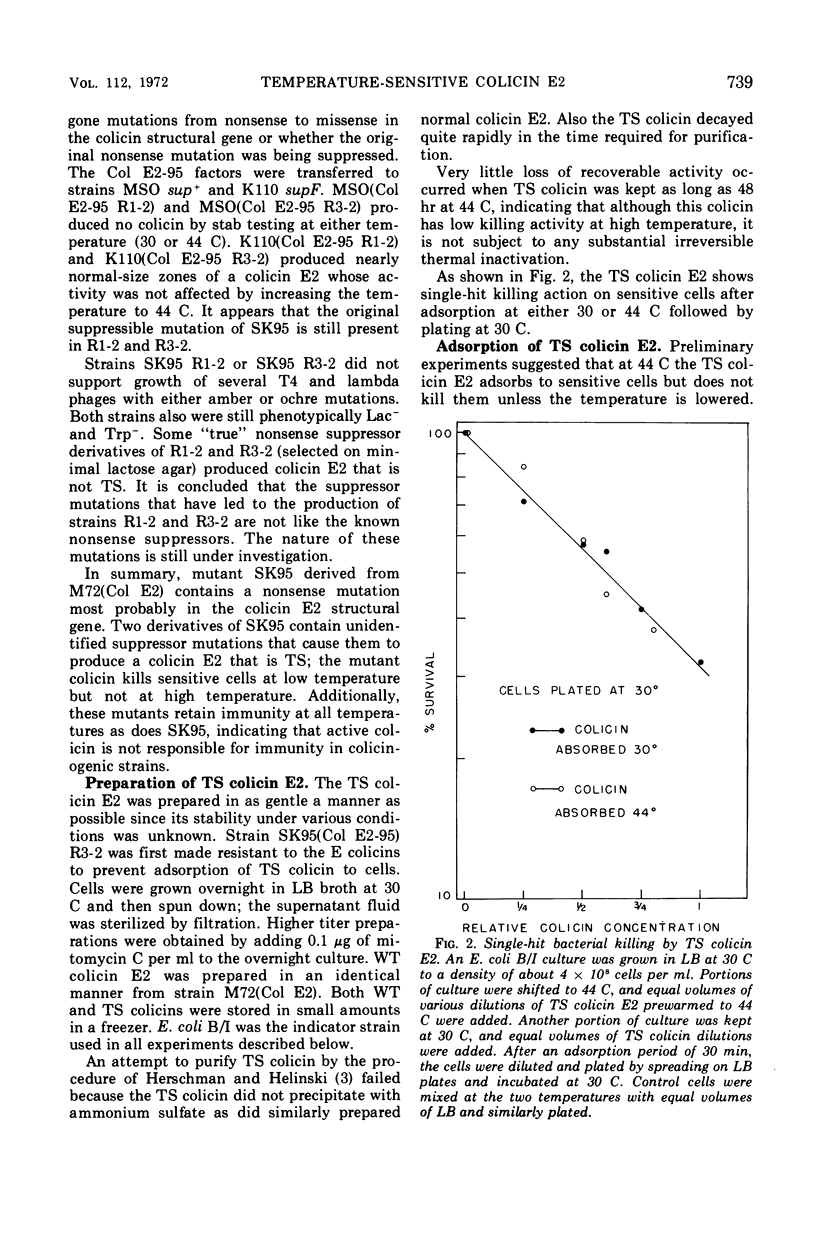
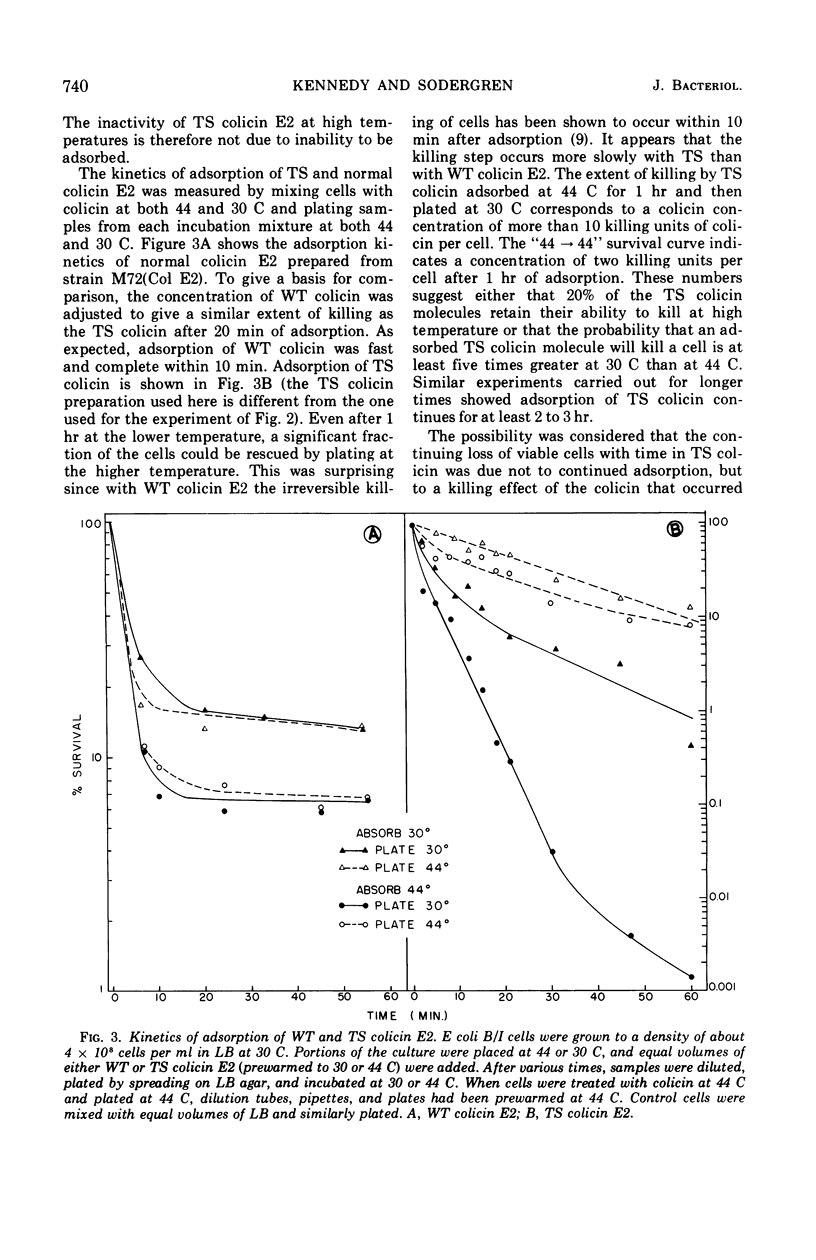
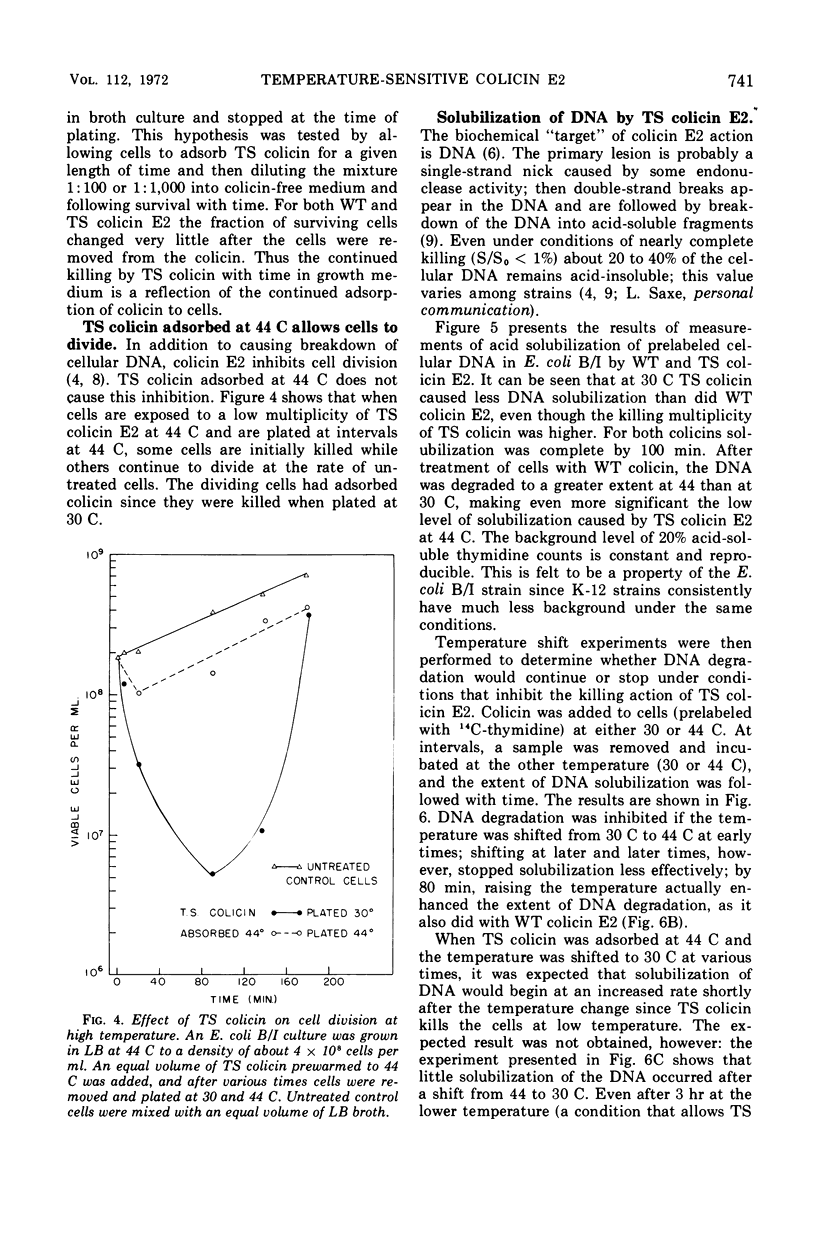
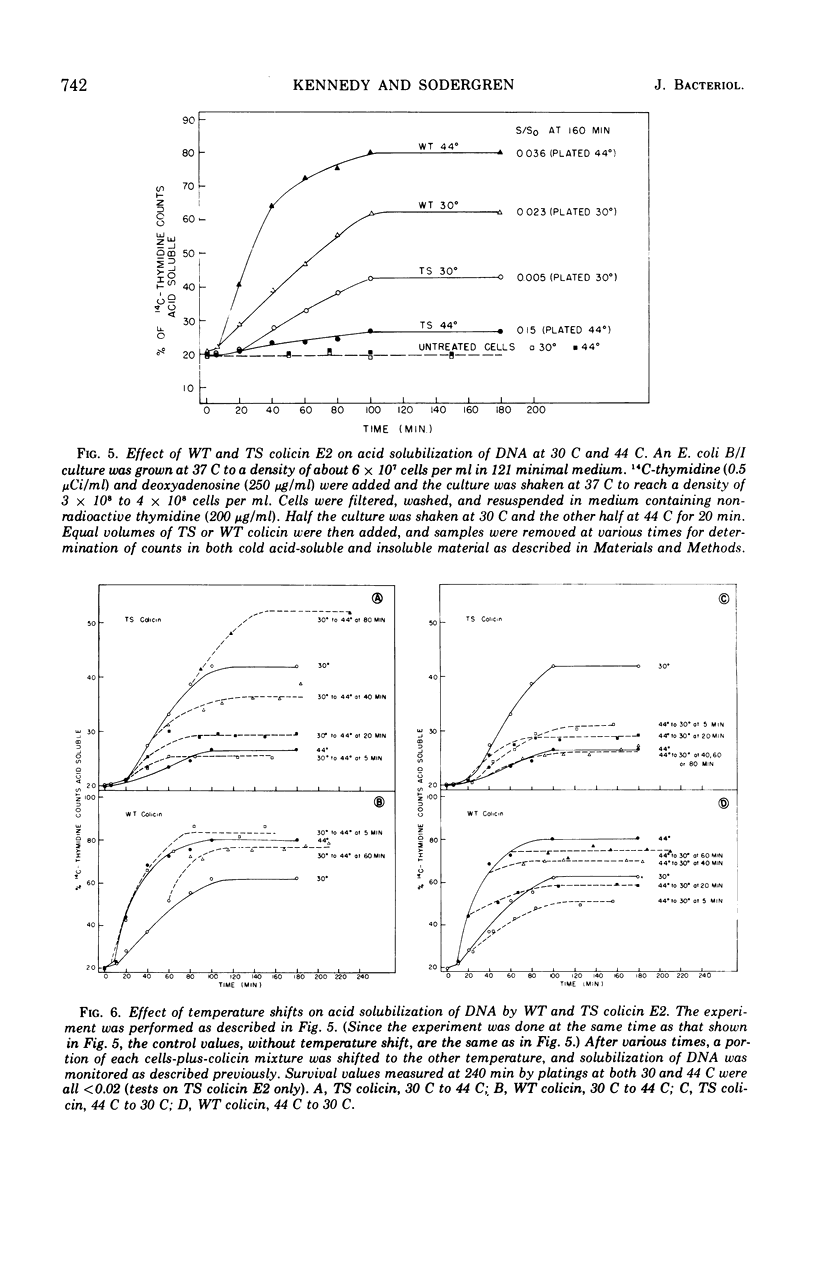
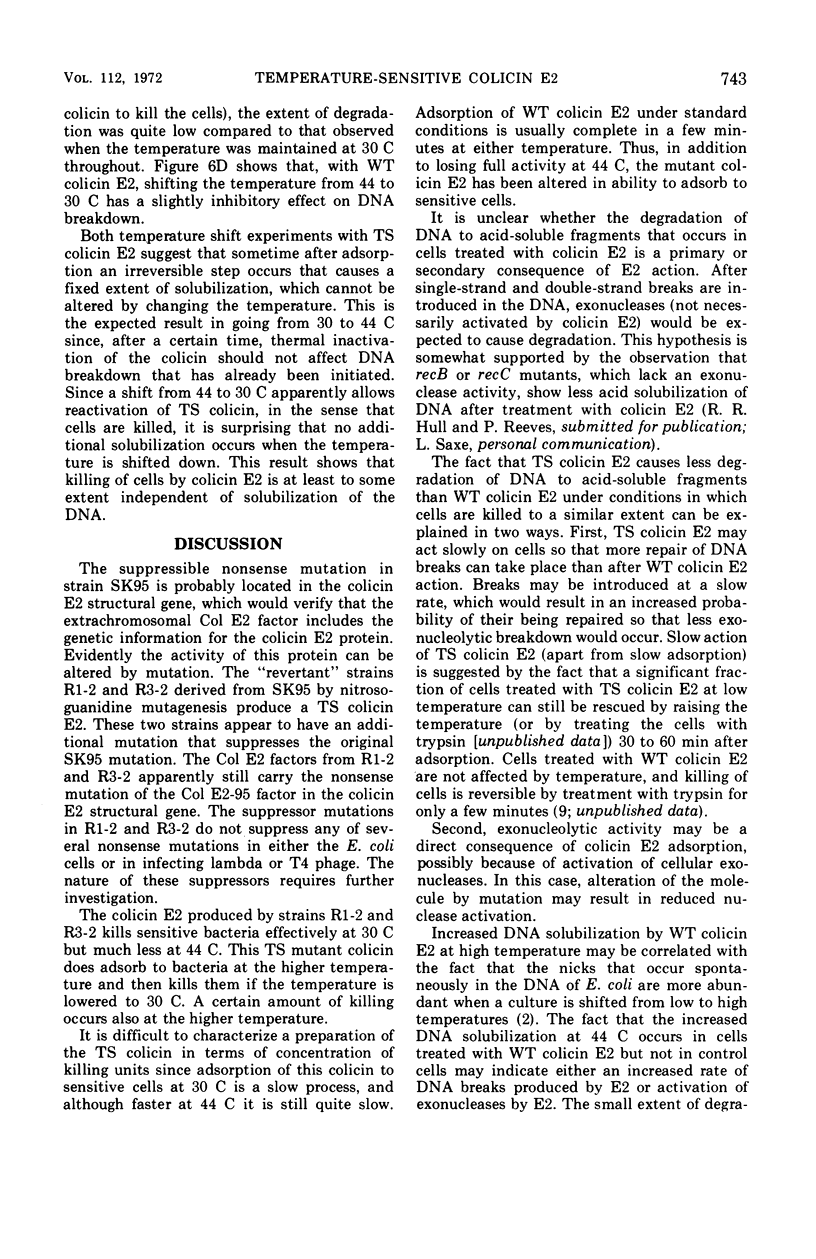
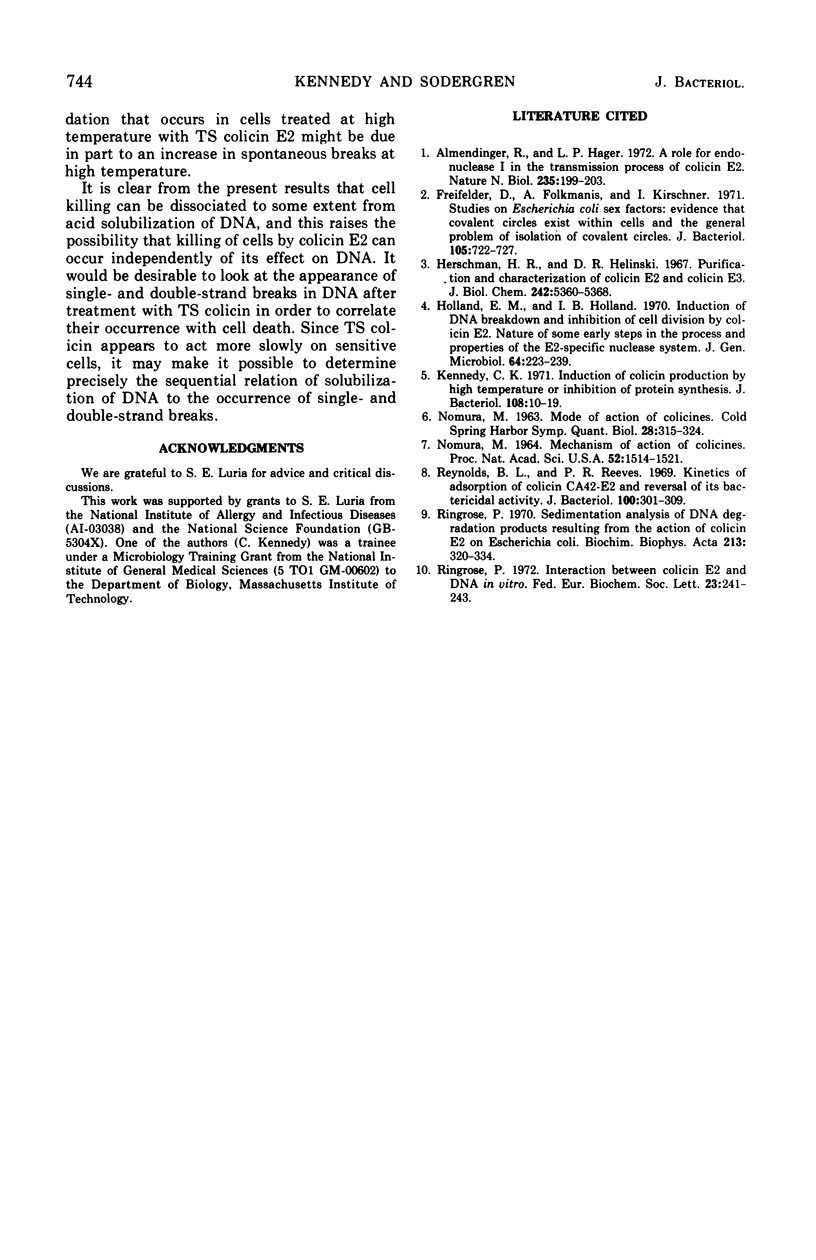
Selected References
These references are in PubMed. This may not be the complete list of references from this article.
- Almendinger R., Hager L. P. Role for endonuclease I in the transmission process of colicin E 2 . Nat New Biol. 1972 Feb 16;235(59):199–203. doi: 10.1038/newbio235199a0. [DOI] [PubMed] [Google Scholar]
- Freifelder D., Folkmanis A., Kirschner I. Studies on Escherichia coli sex factors: evidence that covalent circles exist within cells and the general problem of isolation of covalent circles. J Bacteriol. 1971 Mar;105(3):722–727. doi: 10.1128/jb.105.3.722-727.1971. [DOI] [PMC free article] [PubMed] [Google Scholar]
- Herschman H. R., Helinski D. R. Purification and characterization of colicin E2 and colicin E3. J Biol Chem. 1967 Nov 25;242(22):5360–5368. [PubMed] [Google Scholar]
- Holland E. M., Holland I. B. Induction of DNA breakdown and inhibition of cell division by colicin E2. Nature of some early steps in the process and properties of the E-2-specific nuclease system. J Gen Microbiol. 1970 Dec;64(2):223–239. doi: 10.1099/00221287-64-2-223. [DOI] [PubMed] [Google Scholar]
- Kennedy C. K. Induction of colicin production by high temperature or inhibition of protein synthesis. J Bacteriol. 1971 Oct;108(1):10–19. doi: 10.1128/jb.108.1.10-19.1971. [DOI] [PMC free article] [PubMed] [Google Scholar]
- NOMURA M. MECHANISM OF ACTION OF COLICINES. Proc Natl Acad Sci U S A. 1964 Dec;52:1514–1521. doi: 10.1073/pnas.52.6.1514. [DOI] [PMC free article] [PubMed] [Google Scholar]
- Reynolds B. L., Reeves P. R. Kinetics of adsorption of colicin CA42-E2 and reversal of its bactericidal activity. J Bacteriol. 1969 Oct;100(1):301–309. doi: 10.1128/jb.100.1.301-309.1969. [DOI] [PMC free article] [PubMed] [Google Scholar]
- Ringrose P. S. Interaction between colicin E2 and DNA in vitro. FEBS Lett. 1972 Jun 15;23(2):241–243. doi: 10.1016/0014-5793(72)80351-x. [DOI] [PubMed] [Google Scholar]
- Ringrose P. Sedimentation analysis of DNA degradation products resulting from the action of colicin E2 on Escherichia coli. Biochim Biophys Acta. 1970 Aug 8;213(2):320–334. doi: 10.1016/0005-2787(70)90040-7. [DOI] [PubMed] [Google Scholar]


